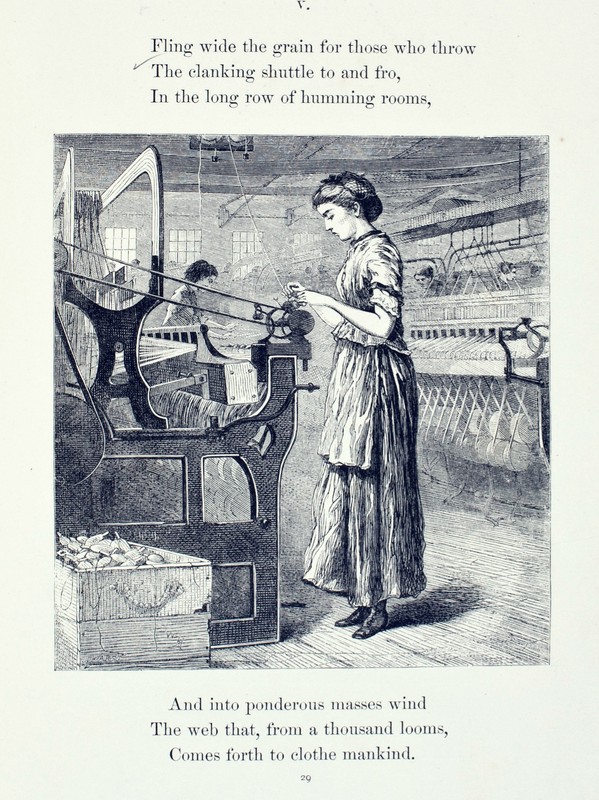Working Conditions
"Their daughter leaves them, a plump, rosy-cheeked, strong and laughing girl, and in one year comes back to them—better clad, ’tis true, and with refined manners, and money for the discharge of their little debts, and for the supply of their wants,—but alas, how changed!” —Eliza Jane Cate, 1848.
Female operatives were some of the hardest working employees in mills and factories, but also some of the most exploited. Drawn by the prospect of freedom and money, they often logged twelve-hour days and there were few codes and regulations to ensure their safety. Between poor building structures, dangerous machinery, crowded boardinghouses, and a variety of frequent accidents, these women worked at their own risk. Work hazards were compounded by exhaustion, a frequent topic of reporting from inside and outside the mill.
Many female factory workers took up the pen to detail their daily lives and to expose their conditions. Yet, the outsider’s perspective on mill girls and female factory operatives was the one that received the most publicity and primarily shaped the public’s opinion of these women. Visitors to the mills painted conflicting portraits of haggard women, whose youth and beauty was being ruined in the mills, and virtuous maids, whose labors afforded them luxuries never before known to working-class women. Newspapers across the country also ran sensational stories of mill accidents, relishing in the horrific details. Whether criticized, valorized, or mourned, mill girls often found themselves at the mercy of the public perception that so widely circulated in nineteenth-century print.

